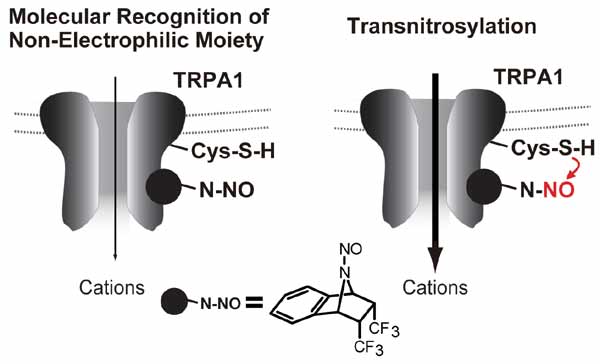Abstract
The transient receptor potential (TRP) proteins are a family of ion channels that act as cellular sensors. Several members of the TRP family are sensitive to oxidative stress mediators. Among them, TRPA1 is remarkably susceptible to various oxidants, and is known to mediate neuropathic pain and respiratory, vascular and gastrointestinal functions, making TRPA1 an attractive therapeutic target. Recent studies have revealed a number of modulators (both activators and inhibitors) that act on TRPA1. Endogenous mediators of oxidative stress and exogenous electrophiles activate TRPA1 through oxidative modification of cysteine residues. Non-electrophilic compounds also activate TRPA1. Certain non-electrophilic modulators may act on critical non-cysteine sites in TRPA1. However, a method to achieve selective modulation of TRPA1 by small molecules has not yet been established. More recently, we found that a novel N-nitrosamine compound activates TRPA1 by S-nitrosylation (the addition of a nitric oxide (NO) group to cysteine thiol), and does so with significant selectivity over other NO-sensitive TRP channels. It is proposed that this subtype selectivity is conferred through synergistic effects of electrophilic cysteine transnitrosylation and molecular recognition of the non-electrophilic moiety on the N-nitrosamine. In this review, we describe the molecular pharmacology of these TRPA1 modulators and discuss their modulatory mechanisms.
Keywords: Electrophile, nitric oxide, non-electrophilic compound, oxidative stress, transnitrosylation, TRP channel, TRPA1.


























